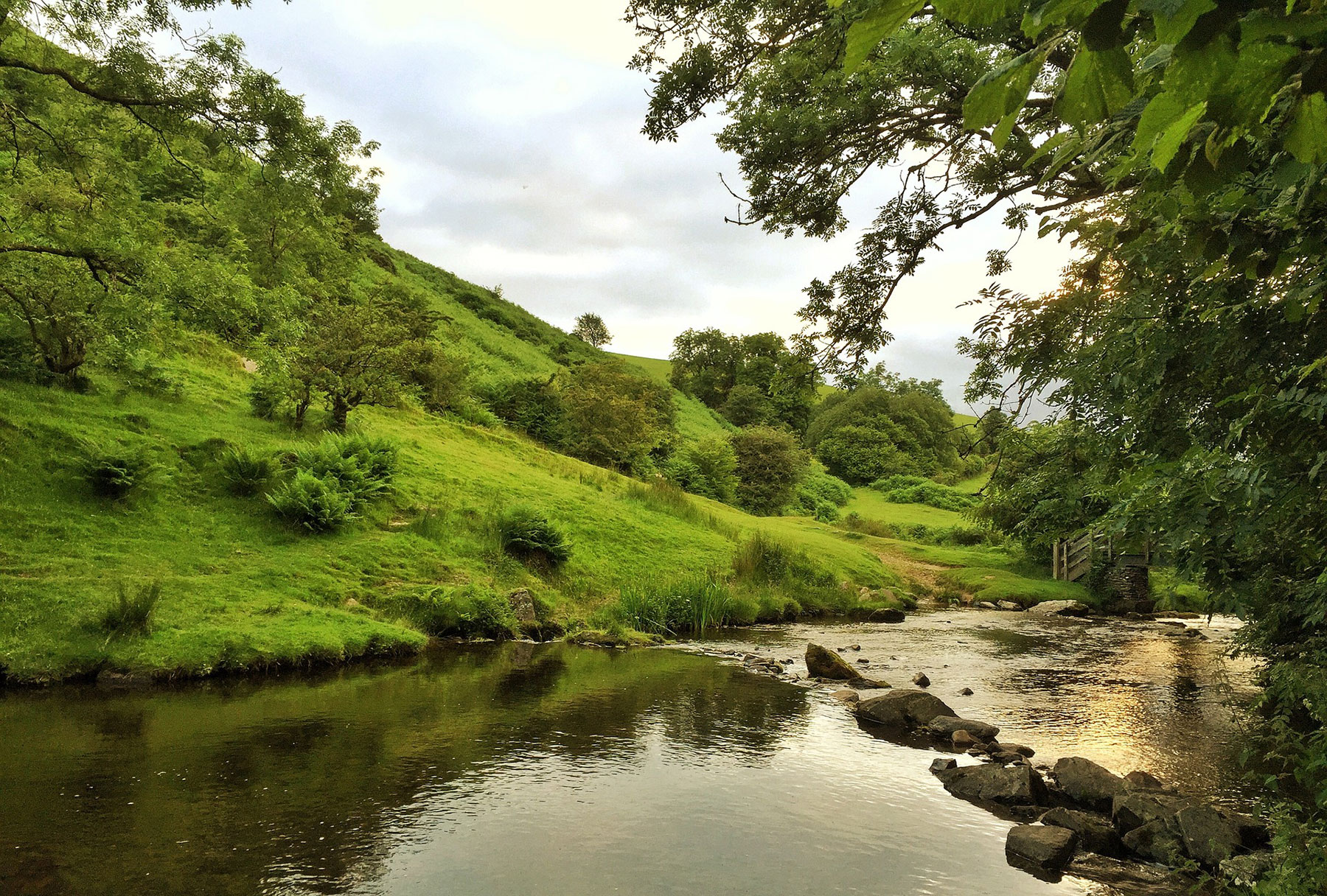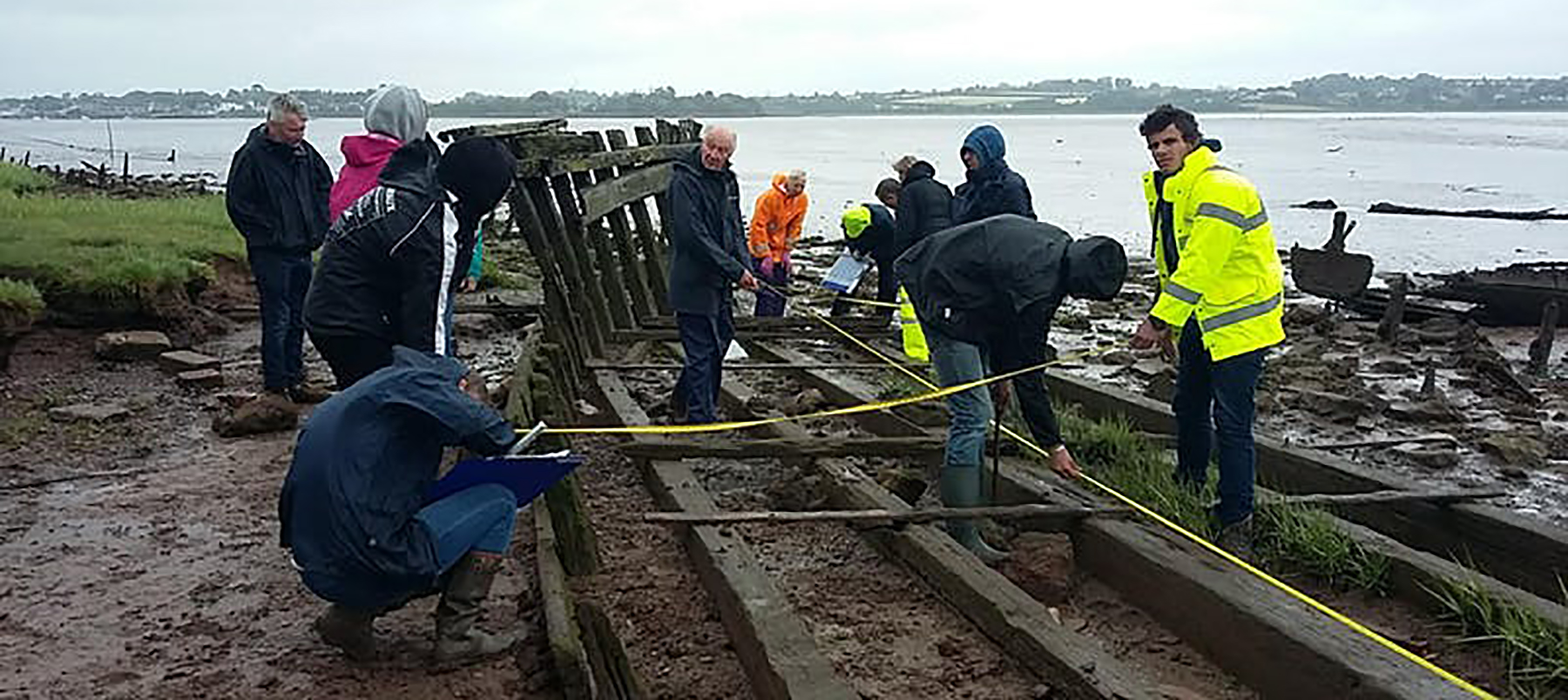South Devon Rivers Discovery Project
A collaborative project enhancing our understanding of cultural responses to different estuarine environments in southern Britain.

About the project
The maritime heritage of Devon's rivers, which extends back many millennia, is an important resource for us all. This project, in collaboration with the Coastal and Intertidal Zone Archaeology Network (CITiZAN), Museum of London, focusses on the maritime archaeology and heritage of three markedly different South Devon rivers: from east to west, the Exe, the Teign and the Dart.
The Exe: fishing, tourism, trading and whaling
The Exe is a major river, connecting the county town and city of Exeter to the sea; rich in mercantile history from the Roman period onwards, settlements such as Topsham, Lympstone, Exmouth, Starcross and Dawlish Warren all embody many different facets of maritime life such as shipbuilding, fishing and seaside tourism (and even, in the case of Topsham, whaling).
The Teign: shellfish farming, boat building and mining
The Teign is smaller; here the port of Teignmouth still gives the river an industrial and workaday character. Historically, fishing has been important here (particularly with the development of the Newfoundland cod industry in the 16th century), and boat building has historically been a small-scale industry along with salt extraction and shellfish farming. Further upstream, an 18th-century canal emphasises the river's links to the china clay extraction industry of the Bovey basin and the granite quarries of eastern Dartmoor around Hay Tor.
The Dart: military importance
The Dart has historically had an important military, naval character. Dartmouth itself was an important Tudor naval centre, and this emphasis upon defence carries on into the Second World War when the river was extensively used for preparations for D Day. Here too we find a historical reliance on shipbuilding, fishing and salt extraction. At the furthest tidal extent is the Anglo-Saxon burgh of Totnes, demonstrating significant mercantile wealth based on access to the sea.
The project: aims, methods and future plans
The aim is to compare and contrast different cultural responses to each of these three estuarine environment over the last ca four millennia. This can increase our wider appreciation of the relationship between land and sea in southern Britain over time. All of these different maritime activities leave distinctive archaeological traces along the shores of these estuaries, and the focus of the project is on recording this diverse estuarine archaeology within the intertidal zone. Such features could be represented by ancient salt pans, fish weirs, boatyards, jetties, hulks and single artefacts, for example. Recording is scheduled to take place when the tidal regimes allow access to the estuarine foreshores. Archaeological recording, using conventional planning, photography and digital media, therefore has to be rapid, accurate and effective.
The project was formally launched in April 2016 and the first field season was based in Teignmouth. Scheduled in the first instance to run for two years, an extended commitment of three years could be made in 2018 thanks to further Heritage Lottery funding. Initially, students from the University of Winchester formed the core of the team; local volunteers and students from other universities were gradually introduced, and a small-scale estuarine archaeology network developed, which is feeding into the wider national scope of CITiZAN.
Recent Outreach
July 2020: Webinar The English seaside: the archaeology of a holiday experience on the South Devon coast
Oh we do like to be beside the seaside! Grab your bucket and spade and join a windswept Dr Niall Finneran for this fascinating webinar. A joint initiative with CITiZAN, it was first delivered on 9 July and is now available online; watch the video here!
For more outreach, see below.
Research team
Principal Investigator: Dr Niall Finneran, Reader in Historical Archaeology and Heritage Studies
Co-Investigator: Therese Kearns, CITiZAN Discovery Programme Officer, South Devon Rivers
Outreach and output
Events
July 2020: Webinar The English seaside: the archaeology of a holiday experience on the South Devon coast
Oh we do like to be beside the seaside! Grab your bucket and spade and join a windswept Dr Niall Finneran for this fascinating webinar. A joint initiative with CITiZAN, it was first delivered on 9 July and is now available online. Watch the webinar.
May 2019: Launch of the 2019 season
May 31st 2019 saw the launch of the 2019 South Devon Rivers Discovery Programme, at the Devon and Exeter Institution in Exeter. It offered a chance to find out how members of the public can become involved in the project and sign up to be a CITiZAN Surveyor. (Image: CITiZAN)
Further information
As with any archaeological/heritage project, outreach and outputs are very important. The project design and ethos are closely related to the long-lived and successful Thames Discovery Programme run from the Museum of London, and benefits from extensive local volunteer and community input. Full training is given to all team members and the emphasis is very much upon community participation and 'having a go'. This is a model which has been demonstrated to be exceptionally effective within the context of the Thames Discovery Programme.
Dedicated smartphone and tablet apps, developed by CITiZAN, make for a cost-effective and user-friendly interface. Popular media outputs such as short films, exhibitions, workshops, pamphlets and accessibly written guides allow for effective community outreach.
Academic outputs will include interim reports (for example, in the journal Proceedings of the Devon Archaeological Society) and, ultimately, in monograph format. Much of the research background forms a significant part of Dr Finneran's forthcoming monograph, Shifting Seascapes: a maritime archaeology of Devon. The project is designed to have both academic and community impact, feeding into local heritage and museums initiatives, and longer-term, impacting upon local education and tourism strategies.
Other legacies will be the training of volunteers in innovative archaeological recording methodologies, and the ability to monitor the dynamic and ever-changing archaeology of the estuarine foreshores of South Devon.

